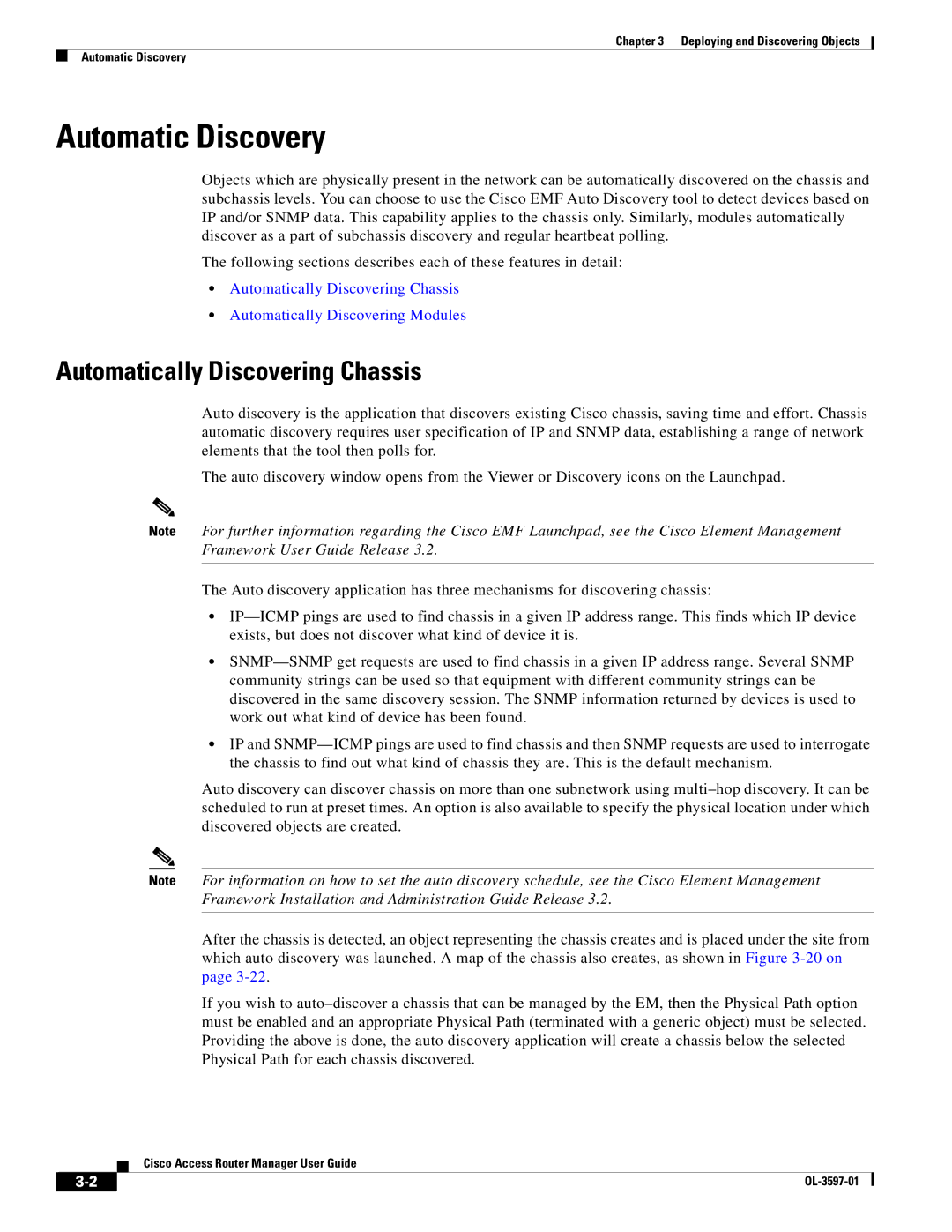
Chapter 3 Deploying and Discovering Objects
Automatic Discovery
Automatic Discovery
Objects which are physically present in the network can be automatically discovered on the chassis and subchassis levels. You can choose to use the Cisco EMF Auto Discovery tool to detect devices based on IP and/or SNMP data. This capability applies to the chassis only. Similarly, modules automatically discover as a part of subchassis discovery and regular heartbeat polling.
The following sections describes each of these features in detail:
•Automatically Discovering Chassis
•Automatically Discovering Modules
Automatically Discovering Chassis
Auto discovery is the application that discovers existing Cisco chassis, saving time and effort. Chassis automatic discovery requires user specification of IP and SNMP data, establishing a range of network elements that the tool then polls for.
The auto discovery window opens from the Viewer or Discovery icons on the Launchpad.
Note For further information regarding the Cisco EMF Launchpad, see the Cisco Element Management Framework User Guide Release 3.2.
The Auto discovery application has three mechanisms for discovering chassis:
•
•
•IP and
Auto discovery can discover chassis on more than one subnetwork using
Note For information on how to set the auto discovery schedule, see the Cisco Element Management Framework Installation and Administration Guide Release 3.2.
After the chassis is detected, an object representing the chassis creates and is placed under the site from which auto discovery was launched. A map of the chassis also creates, as shown in Figure
If you wish to
Cisco Access Router Manager User Guide
| ||
|
